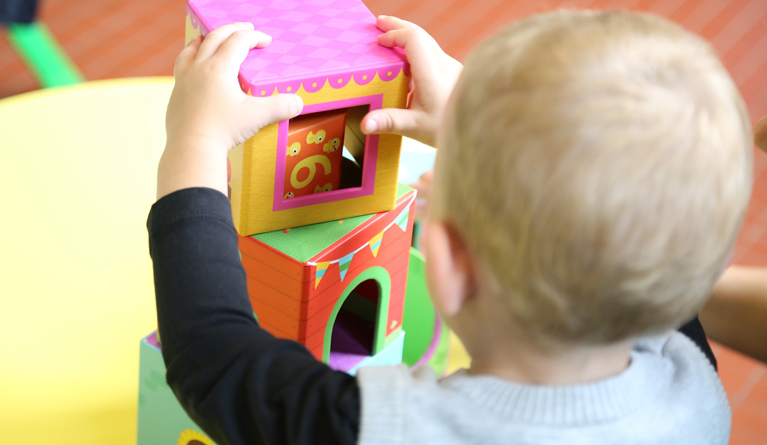If you’re a working parent, you probably know the most tax efficient way to pay for childcare and the chances are you’re already maximising the benefits available to you. Typical schemes offered by employers are; childcare vouchers (the most popular), direct contracts with childcare providers and workplace nurseries.
However, following the launch of the Government’s new tax-free childcare scheme, there’s now a ‘new kid on the block’. Although the savings platform will top-up your childcare contributions by 20% (limited to £8,000) – making your money go further – it’s not necessarily the best option for all.
Lemonade Money looked at the stats to see who’s likely to benefit from the new scheme, and who’s better off staying put.
Basic rate taxpayer couple
Working parents Rita and Fred currently pay £400 per month for childcare, each buying £200 worth of monthly childcare vouchers to pay for this, so £4,800 per year. They collectively save £1,536 in tax and National Insurance contributions meaning their vouchers cost £3,264.
If they put £3,264 into the Government’s new savings account (available through the Gov UK website and run by National Savings & Investments), Rita and Fred’s 20% top-up gives them £4,080 – £720 less than what the vouchers are worth.
Higher rate taxpayer couple
Higher rate tax payers Ushmi and Ross currently buy £2,912 worth of childcare vouchers (£1,456 each). The salary sacrifice scheme gives them a collective tax and National Insurance saving of £1,223.04 (£611.52 each), meaning the vouchers effectively cost them £1,688.96.
If they put £1,688.96 into the new childcare account and it was topped up by 20%, they would have £2,111 to pay towards childcare – a loss of £800. For the 20% top-up to match to their tax and National Insurance savings, they’d need to pay in £2,912. This will boost their pot to £3,640 (but remember they’ve already paid tax and National Insurance on this).
Basic/higher rate taxpayer couple
Working parents, Phil and Michelle are paying basic and higher rate, together they can currently buy £4,316 worth of childcare vouchers (£2,860 basic and £1,456 higher). The salary sacrifice scheme delivers them a collective tax and National Insurance saving of £1,526.72 (£915.20 basic and £611.52 higher), meaning their vouchers effectively cost them £2,789.28.
If they put £2,789.28 into the new childcare account and it was topped up by 20%, they would have £3,486.60 to pay towards childcare – a loss of £829. For the 20% top-up to match their tax and National Insurance savings, they’d need to pay in £7,634. Over this, they’re better off (but remember the Government only pays 20% on savings up to £8,000).
Our conclusion
Greater tax and National Insurance savings can be made through childcare vouchers – so stay put unless you’ve got the spare cash to top up the pot further and make the 20% boost work for you.
Self-employed/basic rate taxpayer couple
Working parents Michael and Paula currently pay £500 per month for childcare. Michael is self-employed so not eligible for any schemes and Paula buys £243 (maximum allowed) worth of monthly childcare vouchers to pay towards the cost, so £2,916 per year. Paula saves £933 in tax and National Insurance contributions meaning her vouchers cost £1,983.
Conclusion
Michael and Paula would only need to put £400 per month into the Government’s new savings account, as the 20% top-up on their £4,800 pot would give them an extra £1,200 (enough to cover their yearly childcare). This is more than the £933 Paula saves in tax and National Insurance.
Self-employed/higher rate taxpayer couple
Self-employed and higher rate taxpayers Ben and Natalie currently pay £500 per month for childcare. Ben is self-employed so not eligible for any schemes and Natalie buys £121.33 (maximum allowed) worth of monthly childcare vouchers to pay towards the cost, so £1,456 per year. Natalie saves £612 in tax and National Insurance contributions meaning her vouchers cost £844.
Conclusion
Similarly, Ben and Natalie only need to put £400 per month into the Government’s new savings account as the top-up on their £4,800 pot gives them an extra £1,200. This is far more than the £844 Natalie saves in tax and National Insurance using the monthly childcare vouchers.
Workers not in schemes
If you, your partner, or both are self-employed it could be a win, win scenario. The self-employed have never been able to pay into a childcare voucher scheme so make the most of this option. The same applies to workers who are not in any company schemes, so seize the opportunity to turn 80p into £1.
Help with finances
From April there will be a change to child tax credit; it will only be paid for the first two children in any household so even more reason to make savings where you can.
If you don’t have the time or inclination to work out what are the best options for you or if you need some help with financial planning, Lemonade Money has a simple voucher/account comparison table on its blog, plus a free financial health tool which enables you to assess how you’re doing in six important areas, including debt planning/budgeting, saving and buying a new home.
For additional support speak to a Lemonade Hero – a financial fitness mentor whose sole purpose is to get your finances on track.
Working out the numbers:
It’s more like a 25% bonus than 20% relief (although they work out to be the same). If you pay in £80 after you’ve been taxed, then you’ll have £100 in your account: 80 x 125% = 100 (the same as basic rate tax relief). Why?
If you earn £100 and pay 20% tax you end up with £80, which you can then pay into the new childcare scheme and it turns back into £100. To calculate what will end up in a childcare account, take the cash paid in from your bank account and multiple by 1.25 or divide by 0.8.
 In the News – March 2017
In the News – March 2017
The roll out was announced formally by the Chancellor in his Spring Budget. In his speech he said that two million households will be eligible for tax free childcare by the end of the year. Working families could receive up to £2,000 a year for each child under-12. Under the new system, the government will pay 20% of annual childcare costs.
Those with children aged three and four will also see their childcare entitlement doubled to 30 hours a week, potentially saving them £5,000 a year.
As background for new mums, the new scheme, which will start rolling out next month, will certainly affect new parents. The existing childcare voucher scheme will close to new applicants in April 2018 – however, parents that are signed up to this arrangement before this deadline will be able to continue using this.
In terms of how the new arrangement works, parents will need to open an online account (provided by NS&I) This is done by logging onto the government’s website www.gov.uk. Payments are then made into this account, which is topped up by the government. You can open one account per child up to the age of 12, or 17 if disabled. Deposits of up to £8,000 in each will receive the maximum government contribution of £2,000 (£4,000 if the child is disabled). You, family members or even employers can pay into the childcare account, building up a balance to cover periods where childcare costs might be higher. If you decide to withdraw from the scheme, any money that’s in the account can be taken out, although the government will also stop making contributions.








Leave A Comment
You must be logged in to post a comment.